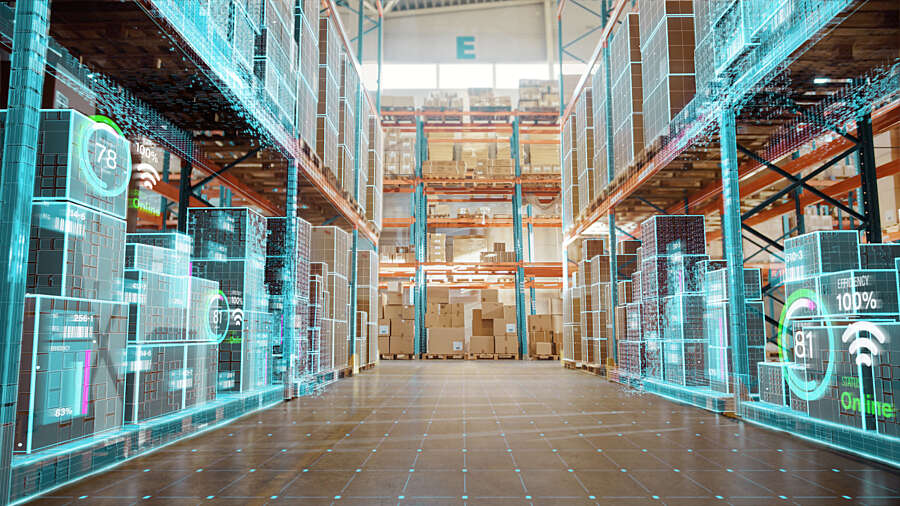Maximize Customer Satisfaction in the CPG Industry
Integrating Inventory, Warehousing and ERP Systems
In the fast-paced Consumer Packaged Goods (CPG) industry, maintaining real-time visibility into product availability is a persistent challenge. Customers expect accurate inventory information, reliable availability dates, and on-time deliveries—whether they are placing large enterprise orders or purchasing individual units from an online marketplace like Amazon.
However, ensuring this level of service requires seamless coordination across multiple functions. To improve customer service, you need to improve communication among the critical parts of your business.
Using artificial intelligence (AI) alongside a convergence of information technology (IT) systems and operation technology (OT) machinery can help to mitigate this risk, by connecting your supply chain applications and hardware to enable AI-driven planning.
There are several benefits to your business, all of which translate into increased revenues or cost reduction:
- Real-time location information: Reduces delays and losses, improves planning, increases space utilization and reduces processing time and cost.
- Real-time inventory levels: Allow automating transfers, re-orders and replenishments.
These all translate into increased revenues or cost reduction, Key Performance Indicators (KPIs) for CPG organizations. Knowing where each of your products is stored at all times means your warehouse personnel can access it more quickly to get it to your customers more quickly, and you’re more likely to have the product on-hand when a customer needs it.
Challenges in Customer Service for CPG Industries
Inefficiencies in order fulfillment can significantly impact customer retention and brand reputation.
A customer expects what they order to always be available and arrive to them by the quoted date for the quoted price. This applies whether they’re ordering tens of thousands or merely one or two units.,
Many factors must align to meet customer expectations effectively. Inventory must be available in the designated warehouse location, where it can be picked, packed and shipped. Meanwhile, multiple customers may be ordering the same item simultaneously, creating the risk that one customer secures the last available unit, leaving another with an unexpected stockout.
Let’s look at a real-world example.
Has this ever happened to you? You receive an automated confirmation stating your order will arrive on a specific date, only to experience delays or last-minute cancellations due to inventory discrepancies. It’s frustrating, isn’t it?
For suppliers, these failures result in dissatisfied customers who may voice their frustration through customer service complaints—or worse, take their business elsewhere. With increasing competition and shrinking lead times, inefficiencies in order fulfillment can significantly impact customer retention and brand reputation.
Several early indicators could have signaled that an order was at risk. So how did the late or missing shipment happen?
Well, likely a number of early indicators could have signaled that the order was at risk.
- A reliable order cycle time prediction could have accounted for the unique combination of ordered items, packaging, and special handling requirements.
- Accurate inventory quantity and location information could have helped identify low stock, out of stock, and backorder items.
- Integrated supply planning could have incorporated production schedules and upstream purchasing and logistics information into a reliable lead time forecast of finished goods inventory.
- Order picking and packing errors could have been eliminated with real-time, intuitive communication to material handlers.
If errors did occur, they could have been detected by autonomous, AI-enabled quality control devices on the conveyor line or at the shipping stations.
Lastly, carrier issues, shipping delays, and routing and delivery date changes could have been made available to your organization and your customers through connectivity to logistics providers.
Organizations without these supply chain capabilities will under-perform relative to competition and will continue to fall short of the ever-increasing customer expectations. Maturing technology leaves no room for inefficiencies in your process.
Strategic Approach to Overcoming These Challenges
IT and OT must operate in tandem with seamless, bidirectional communication for optimal efficiency.
An effective approach involves enhancing communication across business functions through the convergence of IT and OT.
IT Systems | OT Systems |
|---|---|
These systems track inventory from production to shipment, ensuring accurate availability data.
| This consists of shop-floor machinery, including:
|
This integration enables real-time data synchronization, fostering greater efficiency and transparency throughout the supply chain.
For optimal efficiency, IT and OT must operate in tandem with seamless, bi-directional communication. Warehouse personnel, equipped with handheld devices, scan products at every stage—picking, packing, labeling and shipping—updating inventory data in real-time.
As soon as an item is reserved for a customer, all connected systems, including Electronic Data Interchange (EDI) networks, e-commerce platforms and enterprise order systems, reflect the updated inventory status.
This ensures that subsequent customers receive accurate availability information, reducing the risk of over-promising and under-delivering.
Business Benefits of a Connected Supply Chain
There are many customer satisfaction or logistical excellence metrics available, but here are four standard metrics that (at a minimum) everyone should be aware of:
- Order fill rate: A “0/1” measure of whether an order was filled completely: If 100 units were ordered and only 99 units were filled, this metric earns a 0 for the order.
- Case/unit fill rate: A percentage measure: If 100 units were ordered and only 99 units were filled, this metric earns a 99% for the order.
- Lost sales: If an order is shipped incomplete and the customer won’t accept a later delivery or doesn’t re-order the missed units, then this is the dollar revenue that your company won’t recognize.
- “Shipments” vs. “bookings”: A measure typically done at the item/DC level that compares what was ordered versus what was shipped. So it may show the sum of orders = 100 units with a sum of shipments = 80 units.
Implementing an integrated WMS and real-time inventory management approach delivers tangible benefits, including:
- Enhanced visibility and coordination across enterprise applications, bridging the gap between warehouse operations and order fulfillment
- Modern cloud-based WMS with real-time inventory tracking, reducing stock discrepancies
- Improved warehouse efficiency through automation in picking, packing, and shipping
- Optimized inventory levels, reducing the need for excessive safety stock while ensuring availability
But what impact on your bottom line does it lead to?
Well, the most important benefit is happier customers who get their product on time. They can trust you to keep your word and will order from you again in the future, increasing your revenues.
And there are other measurable savings too:
- More time for warehouse workers, based on less rework
- Lower safety stocks and overall inventory levels, leading to less money tied up in stock
- Lower shipping costs and fewer undelivered or delayed shipments, enhancing customer satisfaction
- Improved space and equipment utilization, resulting in lower operating costs
These improvements lead to higher customer retention and revenue growth by ensuring dependable, on-time deliveries and fostering trust in supply chain reliability.
By modernizing shop-floor operations and deprecating legacy systems, businesses can achieve a truly efficient and connected supply chain, ensuring superior customer service and sustained competitive advantage.


